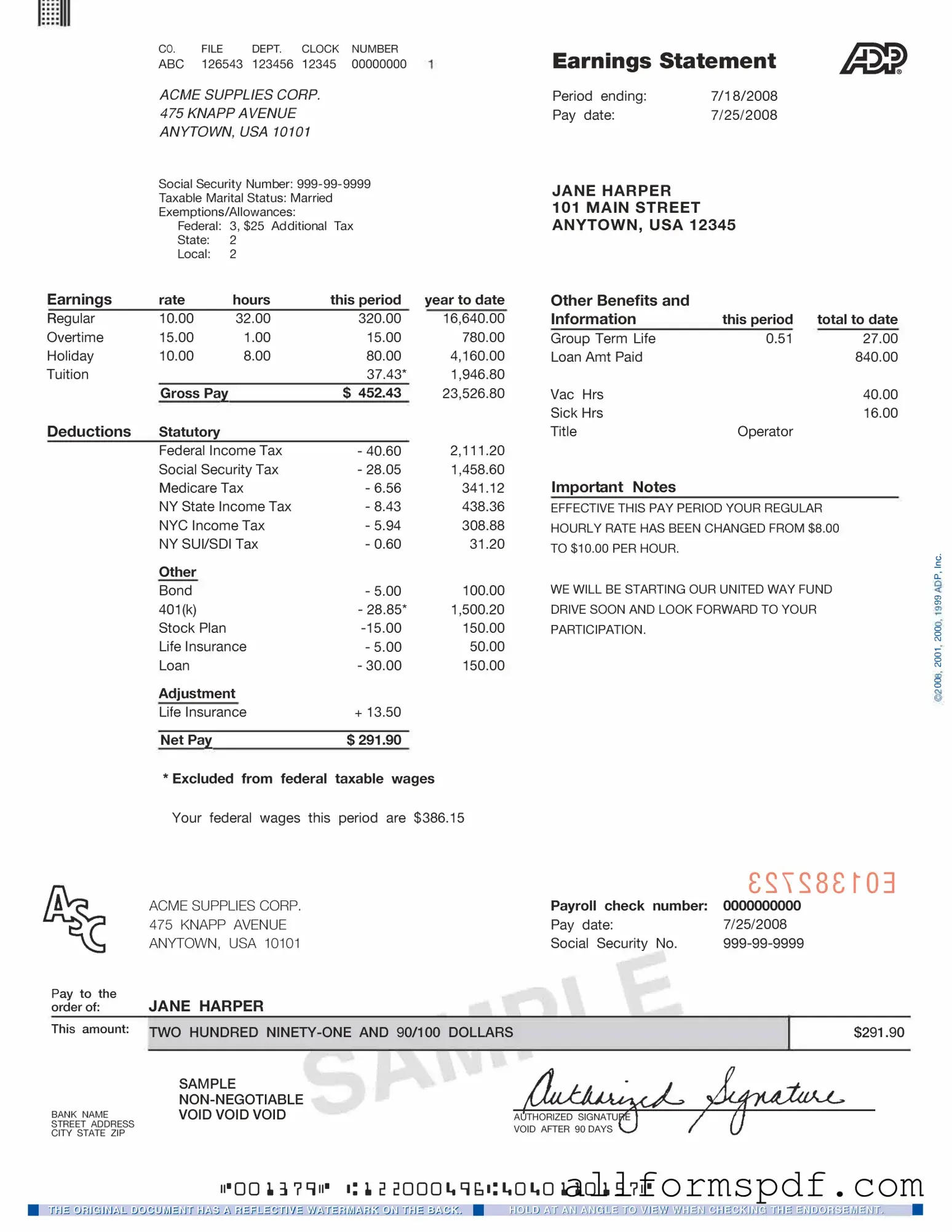Filling out the ADP Pay Stub form can seem straightforward, but many individuals make common mistakes that can lead to confusion or errors in their payroll. One frequent error is not double-checking personal information. Names, addresses, and Social Security numbers must be accurate. A simple typo can create significant issues when processing payroll or filing taxes.
Another mistake is miscalculating hours worked. Employees should ensure that they accurately record all hours, including overtime. Failing to do so can result in underpayment. Always review the total hours before submitting the form.
People often overlook the importance of understanding deductions. Many individuals do not fully grasp how taxes and other deductions affect their net pay. Familiarizing oneself with these deductions can prevent surprises when the paycheck arrives.
Additionally, some individuals forget to include any bonuses or commissions earned during the pay period. These should be clearly listed on the form to ensure proper compensation. Omitting this information can lead to disputes later on.
Another common oversight is not keeping a copy of the completed form. After filling out the ADP Pay Stub form, it is essential to retain a copy for personal records. This can be helpful for future reference or in case of discrepancies.
Many people also fail to update their information when life changes occur. Marital status, dependents, and address changes should be reflected on the form. Neglecting to update this information can lead to incorrect tax withholdings.
Some individuals do not take the time to read the instructions provided with the form. These guidelines are there for a reason. Following them closely can help avoid many common pitfalls.
Another mistake is submitting the form without reviewing it for errors. A final review can catch mistakes that were overlooked during the initial filling process. Taking a moment to check for accuracy can save time and hassle.
Lastly, procrastination can lead to rushed submissions. Filling out the ADP Pay Stub form at the last minute can increase the likelihood of errors. It’s best to complete the form well in advance of the deadline to ensure accuracy.
